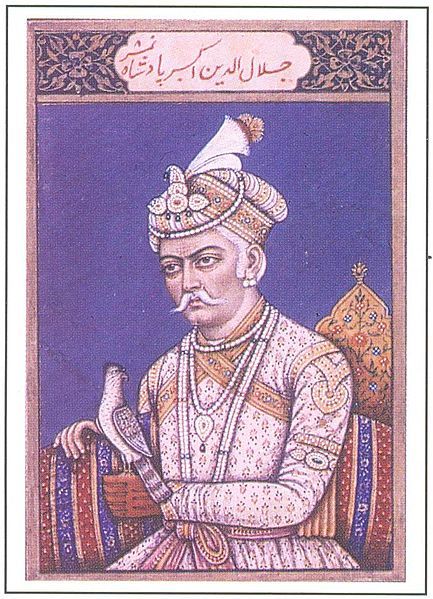
Mughal Emperor.
In 1562 Akbar wrested control from his harem and regent and launched a new era in Indian history: he sought accommodation with old Rajput foes by hiring many into his army, and he married a Rajput woman. Still, he could be ruthless toward resisters, as when he reduced the Rajput city of Chitor and slaughtered 30,000 inhabitants in 1568. Overall, he extended toleration to Hindus, ended forced conversions to Islam, abolished the hated jizya tax on non-Muslims (“dhimmy ^s”), and lifted the Mughal ban on building new Hindu temples and shrines. And he donated land in Amritsar to the Sikhs, who built the Golden Temple there. Akbar altered the administrative power structure of Mughal society, establishing new provincial emirs (“mansabdar”) whom he watched with a vast intelligence network of spies and informers in every subdistrict, including runners and camel messengers who delivered secret intelligence directly to him. He distrusted the “ulema” (community of Islamic scholars), whom he had offended by toleration of, and apparent personal interest in, other Indian faiths. Muslims were also alienated by his fiscal assault on their hitherto taxprotected estates, even though his expensive state still rested mainly on hardpressed peasants taxed at suffocating rates. In 1579 his policies contributed to a revolt by Muslim emirs in Afghanistan.
The mature Mughal military system laid great emphasis on fixed fortresses guarding strategic locations, manned by garrisons of loyal infantry. The field army consisted mostly of cavalry, with contingents of war elephants borrowed from the pre-Muslim Indian military tradition, and poor supporting infantry. Akbar expanded the infantry and added an artillery corps. Akbar was a restless warrior king-though not a notable general-overseeing an unstable but still expanding realm. His Rajput and Mughal generals conquered Gujarat in 1572 and Bengal in 1576. In 1581 they took Kabul, reversing an age-old pattern of invasion of India from Afghanistan. In 1592 Akbar conquered Orissa, and three years later added Baluchistan to the Empire. While he modernized the regime and army he never brought stability to the Empire or escaped the trap of further expansion that made it more unwieldy and prone to chronic rebellion. In his old age even his son, Salim, rebelled (1601), a common succession problem for empires rooted in Central Asian warrior cultures and governed by absolutist dynasties. Akbar died in 1605 after 47 years on the throne. He may have been poisoned by his son.
#
Mughal Army.
The great Muslim empire in India maintained the second largest standing army in the world in this era, in terms of sheer numbers of men and beasts (horses, bullocks, and camels). Tens of thousands of permanent troops were maintained, along with an elephant corps. From the 15th century the Mughals attached an artillery train. The bulk of the army was poorly trained infantry, so that its real striking power remained heavy cavalry well into the 17th century.
mansabdari. The Mughal imperial and military system which employed extensive symbolism about traditional ideals of warrior honor while actually professionalizing the military by setting up complex ranks and salaries.
fitna. “rebellion.” A Muslim term for the tendency of medieval Islamic military alliances to break down, as loose allegiances shifted when a captain was bought off by an enemy to pre-arrange a battlefield desertion or to attack his former master. Under the Mughals, defectors were seldom harmed but were instead brought into the mansabdari system. On occasion, military superiority had to be demonstrated by actually fighting, after which it was normal to revert to military accommodation and assimilation.